MARCH IS LYMPHEDEMA AWARENESS MONTH!
Breast Cancer Survivors should be aware that they are at risk of developing lymphedema, as well as those who have been treated for ovarian, head, neck or prostate cancer or melanoma. Factors that increase your risk include surgery, lymph node removal, radiation therapy, obesity, infection, prolonged use or overuse of an affected area. It is important to know your risk of developing lymphedema, the things you can do to help prevent the onset, and how to recognize early signs and symptoms. The earlier lymphedema is treated, the better the long-term outcome.
Lymphedema is swelling in the tissues just below the skin caused by an abnormal accumulation of protein-rich fluid that occurs when lymph nodes and lymphatic vessels are impaired or missing. Symptoms may include changes in sensation of the affected area, swelling, discomfort and changes in the appearance of skin. Most commonly this occurs in the arms or legs, but can occur in the chest, breast, abdomen, head, neck or genitals.
The lymphatic system is made up of a network of lymphatic vessels that are connected to lymph nodes that filter the lymph fluid. The primary function of the lymphatic system is to transport lymph fluid that contains infection fighting white blood cells throughout the body and to filter and remove bacteria, toxins, waste products and excess fluids from the tissues and return it to the blood circulation. Primary Lymphedema can occur at birth, during puberty or in adulthood If the lymph nodes or vessels are malformed or missing. Secondary Lymphedema is caused by trauma or injury to the lymphatic system, such as surgery or radiation that damages or removes lymph nodes or vessels.
Left untreated, lymphedema often progresses and can cause discomfort, thickening of the skin, infections (cellulitis), disfigurement and disability. While lymphedema is not curable, it can be effectively managed. The standard of care for lymphedema is Complete Decongestive Therapy (CDT) which consists of Manual Lymph Drainage (MLD), compression therapy, lymph drainage exercises, and skin care. A licensed Physical Therapist that specializes in lymphedema will provide an individual plan of care to treat and manage the condition and will refer to a certified fitter for measuring and fitting appropriate compression garments that are a necessity for control of lymphedema.
For more information on signs and symptoms, risk factors and preventative measures for lymphedema, visit https://www.breastcancer.org/treatment/lymphedema/risk_factors. Our Certified Fitters at Fittings By Michele can measure and fit you for ready-made and custom compression garments.
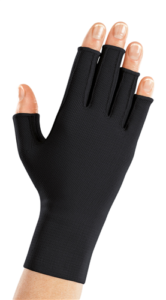
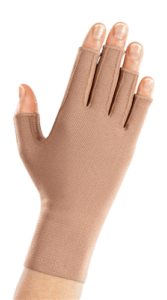
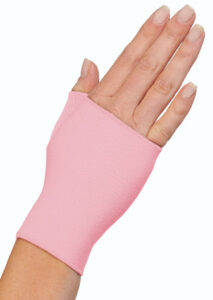




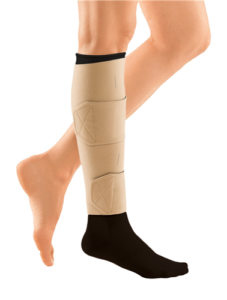
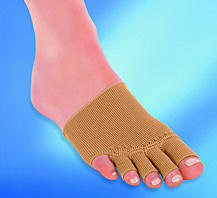
Visit https://fittingsbymichele.com/compression-garments/ for a look at a just few of the many types of garments we offer.
All my best,
Michele
